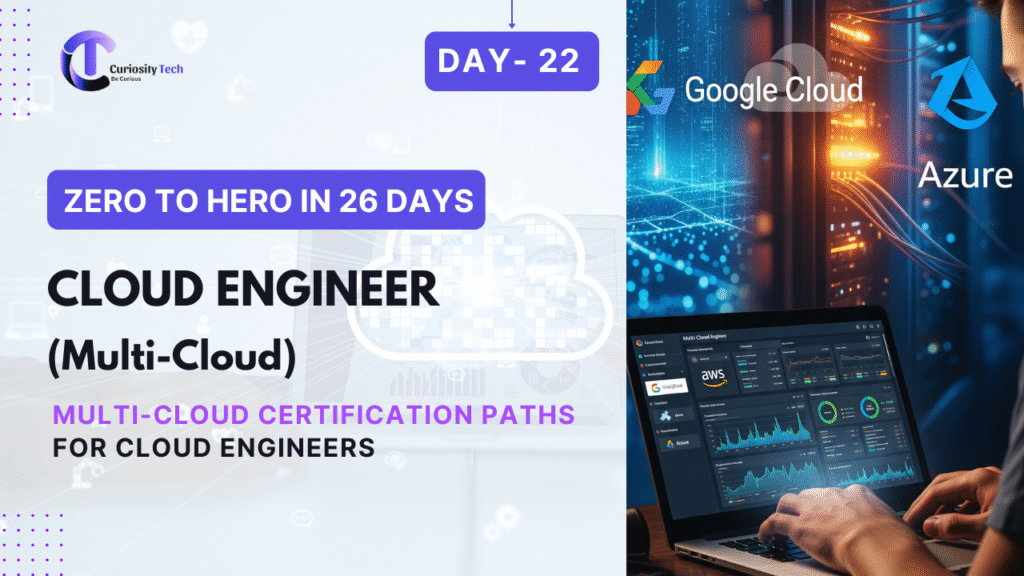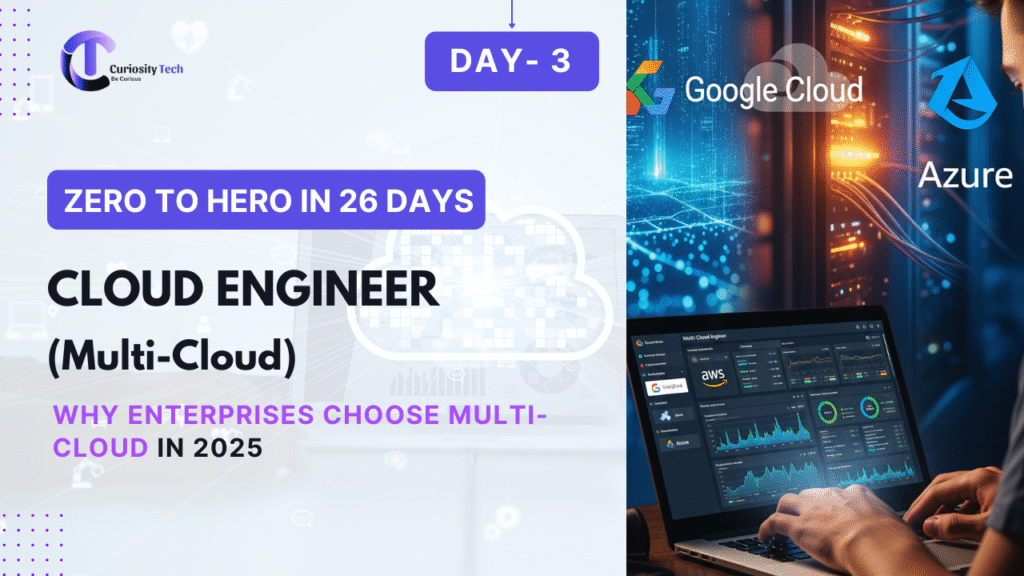Introduction
Cloud Robotics is a rapidly evolving paradigm in which robots leverage cloud computing, IoT devices, and distributed networks to enhance computation, storage, and collaborative capabilities. This integration allows robots to perform complex tasks without being limited by onboard processing, making them smarter, more adaptive, and scalable for industrial, healthcare, and service applications.
At curiositytech.in learners gain hands-on exposure to cloud-connected robots, IoT integration, and practical implementation tutorials to understand how cloud robotics is shaping the future.
1. What is Cloud Robotics?
Cloud robotics refers to the use of cloud computing and network resources to enhance robotic capabilities. Instead of relying solely on onboard processors, robots access:
- Cloud-based AI and machine learning models.
- High-performance computation for navigation, perception, and planning.
- Shared databases for maps, object recognition, and task execution.
- Collaborative learning among multiple robots via cloud updates.
Core Advantages:
- Reduced hardware costs by offloading computation.
- Scalability and collaboration across multiple robots.
- Real-time updates and AI model sharing.
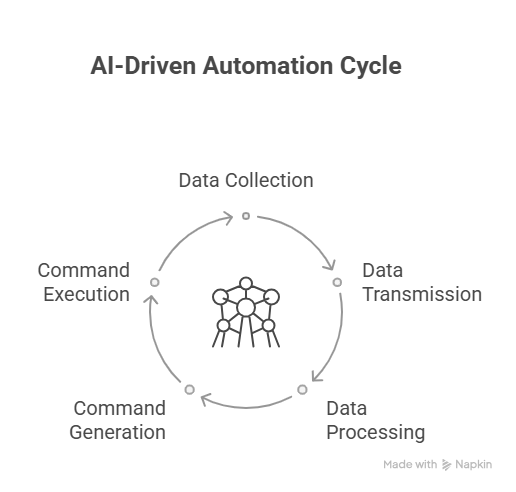
2. IoT Integration in Cloud Robotics
IoT enables robots to collect, transmit, and receive data from the environment or other devices. Cloud robotics relies heavily on IoT for:
- Sensor data streaming (LiDAR, cameras, temperature sensors).
- Remote monitoring of robot performance.
- Synchronization with other robots or systems in the cloud.
Example: A warehouse with IoT-enabled robots shares real-time inventory and location data through the cloud, optimizing path planning and reducing collisions.
Table: IoT Devices Commonly Used in Cloud Robotics
| Device Type | Function | Example Use Case |
| Cameras | Object recognition and monitoring | Shelf scanning robots |
| LiDAR | Mapping and obstacle detection | Autonomous warehouse robots |
| Temperature/Humidity Sensors | Environmental monitoring | Hospital robots for medication storage |
| IMUs | Movement tracking | Drones and mobile robots |
| RFID/NFC Tags | Object identification | Inventory tracking and logistics robots |
3. Architecture of Cloud Robotics
High-Level Architecture:
- Robotic Client: Sensors, actuators, local processor.
- Communication Layer: Wi-Fi, 5G, or industrial IoT protocols.
- Cloud Server: AI/ML models, computation, storage, and task orchestration.
- Data Repository: Shared databases, maps, knowledge base.
- Control Feedback Loop: Cloud sends optimized commands to robots in real-time.
Diagram Idea: Layered architecture showing robotic clients connecting via IoT to cloud servers, data storage, and shared knowledge base.
4. Key Technologies Enabling Cloud Robotics
| Technology | Role in Cloud Robotics | Practical Example |
| Edge Computing | Handles critical tasks locally to reduce latency | Real-time obstacle avoidance |
| Cloud Computing | Performs heavy computation and AI processing | Path planning for autonomous fleets |
| 5G Networks | High-speed, low-latency connectivity | Swarm robotics and fleet coordination |
| IoT Platforms | Device management, telemetry, and communication | AWS IoT, Azure IoT Hub |
| AI & Machine Learning | Enables adaptive decision-making | Object recognition, predictive maintenance |
5. Practical Project Example: Cloud-Connected Mobile Robot
Objective: Build a mobile robot that streams sensor data to the cloud and receives path planning instructions in real-time.
Components:
- Robot Hardware: Raspberry Pi, motors, LiDAR, camera.
- IoT Integration: MQTT protocol or REST API for data exchange.
- Cloud Platform: AWS IoT, Azure IoT Hub, or Google Cloud Robotics.
- AI Integration: Cloud-based neural network for object detection and path optimization.
Implementation Steps:
- Sensor Data Acquisition: Robot collects LiDAR, camera, and IMU data.
- Data Transmission: Send data to the cloud via MQTT or HTTP.
- Cloud Processing: Cloud server runs AI/ML algorithms to plan optimal path and detect objects.
- Command Feedback: Cloud sends navigation instructions back to the robot.
- Real-Time Execution: Robot follows commands while continuously streaming updates to the cloud.
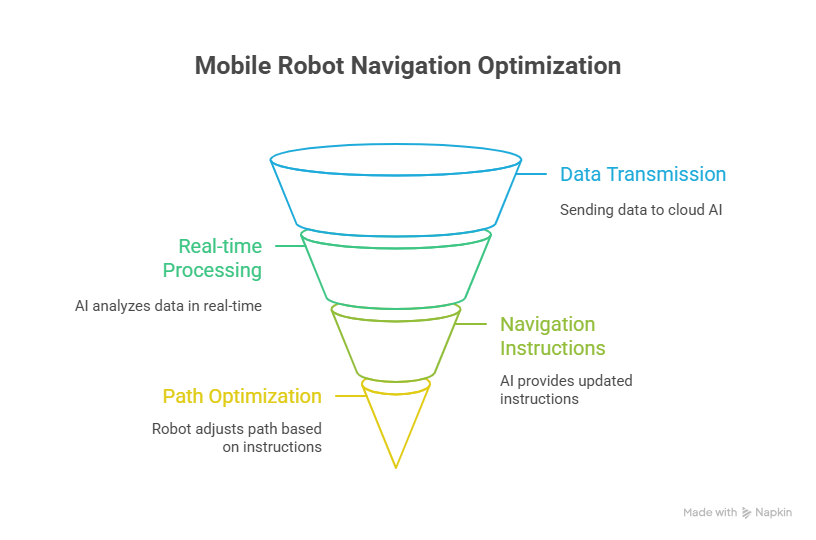
6. Advantages of Cloud Robotics
- Reduced Onboard Processing Requirements: Lightweight hardware, lower costs.
- Collaborative Learning: Robots share knowledge, improving overall system intelligence.
- Scalable Systems: Multiple robots can operate and learn collectively.
- Remote Monitoring and Maintenance: Troubleshoot and update robots from anywhere.
- Access to Advanced AI Models: Enables sophisticated tasks without local computation limitations.
7. Challenges in Cloud Robotics
- Latency & Network Reliability: Critical tasks may fail if cloud connection drops.
- Data Security & Privacy: Sensitive information transmitted over the cloud.
- Integration Complexity: Combining hardware, IoT, and cloud platforms.
- Cost of Cloud Infrastructure: Subscription or pay-per-use models may increase expenses.
Tip: Use edge computing for latency-critical tasks and cloud for heavy AI computation to balance efficiency and safety.
8. Real-World Applications
- Industrial Warehousing: Amazon Robotics uses cloud-connected robots for real-time inventory management.
- Healthcare: Telepresence and surgical robots with cloud-based AI assistance.
- Agriculture: Swarm robots coordinated through cloud for precision farming.
- Smart Cities: Delivery robots and surveillance drones coordinated via cloud systems.
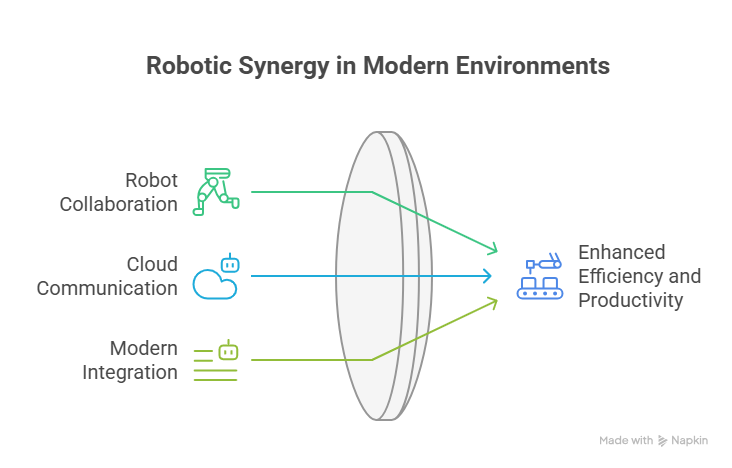
9. Learning Tips for Cloud Robotics
- Start with IoT basics and sensor integration.
- Learn cloud platforms like AWS IoT, Azure IoT Hub, or Google Cloud Robotics.
- Explore ROS integration with cloud computing for robot orchestration.
- Implement small-scale projects before full-scale fleet integration.
- Focus on security, real-time communication, and AI model deployment.
CuriosityTech.in provides hands-on projects, tutorials, and simulation guides for cloud-connected and IoT-integrated robotics.
Conclusion
Cloud Robotics is transforming the capabilities of robots, enabling them to leverage high-performance computation, AI, and collaborative intelligence without being limited by onboard hardware. By mastering cloud integration, IoT connectivity, and real-time AI processing, robotics engineers can build scalable, smart, and collaborative systems. Platforms like curiositytech.in provide the tools, tutorials, and projects necessary to develop expertise in cloud robotics and prepare for the future of automation.

